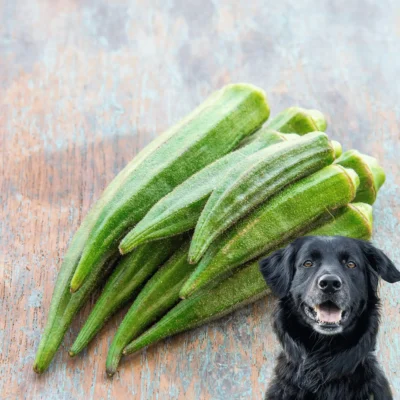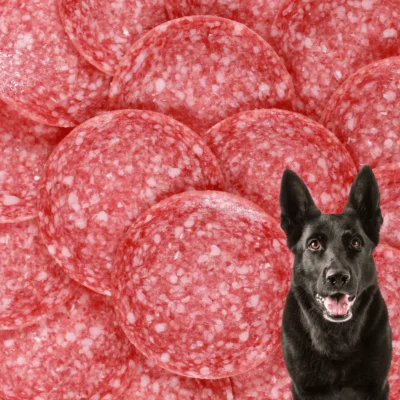Farro, an ancient grain packed with nutrients, has become popular in human diets. But what about our furry friends? Can dogs safely enjoy farro? As pet owners, we’re always vigilant about what our pets can or cannot eat. Some human foods can upset their stomachs, prompting us to exercise caution. Nevertheless, delving into various foods might uncover health benefits for our pets. If you’re wondering whether dogs can munch on farro and if it’s a boon or bane for them, let’s navigate this discussion together.
In this article, we’ll delve into whether dogs can eat farro. We’ll not only explore the nutritional advantages but also consider the potential risks and allergies associated with feeding Farro to dogs. Additionally, we’ll discover effective ways to seamlessly incorporate this superfood into your dog’s diet.
Here are the topics we’re going to discuss in this blog post:
- What is Farro?
- Can dogs eat farro?
- Can dogs eat cooked farro?
- Is Farro safe for dogs?
- Nutritional benefits of farro
- Is Farro bad for dogs?
- How to serve Farro to dogs
What is Farro?

Farro is a hearty and nutritious ancient grain that has been enjoyed for centuries. Farro is a good source of protein, fiber, and various nutrients, including B vitamins, iron, and magnesium. It is also rich in antioxidants.
Due to its nutritional profile and versatility, emmer wheat has become a popular choice in modern cuisine, particularly in Mediterranean and Italian dishes. It can be used in salads, soups, stews, risotto, and more, offering a nutritious and flavorful addition to a variety of recipes. Beyond its role in human diets, farro is recognized as a non-toxic, nutrient-rich superfood that can be incorporated into your dog’s diet with minimal restrictions.
There are many types of farro:
- Einkorn (piccolo)
- Emmer (medio)
- Spelt (grande)
Farro can undergo various levels of processing to make it suitable for different culinary applications. Here are three different levels of processing for farro:
- Whole farro: unaltered or unhulled form, delivers the most nutritional benefits but requires the longest and slowest cooking time.
- Semi-pearled: partially hulled, offering a compromise between nutritional value and cooking efficiency.
- Pearled farro: fully hulled, providing a quicker cooking option, albeit with a reduction in some nutritional content.
Can Dogs Eat Farro?
Certainly, dogs can generally consume farro and certain other grains without issue.
Only a small percentage of dogs may be allergic to farro grains. For pets with gluten sensitivities, there are gluten-free and meat-based alternatives available. However, it’s worth noting that grains can be beneficial for the overall health of the majority of dogs.
If you’re aware that your dog can tolerate gluten without experiencing digestive issues, you can confidently include some cooked farro in their diet.
While hulled wheat can be a source of fiber and nutrients for dogs, it should be given in moderation. Start with small amounts of any new food for your dog. Monitoring for any signs of stomach upset is important.
Can Dogs Eat Cooked Farro?

Yes, dogs can eat cooked farro in moderation. Cooking farro makes it more digestible for dogs and can be a source of nutrients and fiber. When preparing farro for your dog, ensure that the farro is cooked thoroughly. This helps break down the grains and makes them easier for dogs to digest. Serve plain, unseasoned, cooked farro to your dog. Avoid adding salt, spices, or oils, as these additions may not be suitable for your dog.
Like any new food, introduce cooked farro to your dog’s diet gradually and in moderation. Begin by offering small portions of any new food to your dog, as excessive amounts can potentially cause stomach upset. Recognize that each dog may have unique dietary needs and tolerances. If your dog has known allergies, sensitivities, or specific dietary requirements, it’s advisable to consult with your veterinarian before introducing new foods.
Remember that while farro can be a healthy addition to your dog’s diet in moderation, a portion of balanced and nutritionally complete dog food is the foundation of a healthy canine diet. Always consider your dog’s overall health, age, and specific dietary requirements when making decisions about their food.
Is Farro Safe for Dogs?

Certainly! While farro can be safe for dogs in moderation, Farro belongs to the wheat family, and some dogs may have sensitivities or allergies to grains. Moreover, farro contains gluten, which can pose issues for dogs with gluten sensitivity.
However, it’s crucial to acknowledge that, akin to certain humans, some dogs may be gluten intolerant. In humans, this condition is known as “celiac disease.” In dogs, it is referred to as “gluten-induced enteropathy,” “gluten intolerance,” or “gluten sensitivity.” In such cases, the ingestion of gluten-containing grains like farro can lead to digestive issues and other health concerns.
Before introducing any new food, it’s wise to consult your veterinarian, especially if your dog has known food allergies or sensitivities. They can offer personalized advice based on your dog’s health needs and dietary requirements.
Nutritional Benefits of Farro:

Farro can offer some nutritional benefits for dogs when included in their diet in moderation. Here are some potential nutritional perks of farro:
1. Fiber:
Farro is rich in fiber, which can be beneficial for a dog’s digestive health. It adds bulk to the stool, promoting regular bowel movements and helping to prevent constipation. It can contribute to steady blood sugar levels by slowing down the absorption of sugar. This can be particularly beneficial for dogs at risk of or dealing with diabetes.
Fiber has a satiating effect, meaning it helps dogs feel full, which can be beneficial for weight management. If a dog is on a weight loss or weight maintenance plan, including fiber-rich foods like farro can help control hunger.
2. Protein:
Farro is a good source of plant-based protein. While dogs are omnivores and can obtain nutrients from both plant and animal sources, their diet traditionally includes more animal-based proteins. Protein is essential for dogs as it supports muscle development and overall body function.
While protein is important for various physiological functions, dogs primarily derive their energy from a combination of proteins, fats, and carbohydrates. Farro can contribute to the overall energy content of a dog’s diet.
3. Rich in Antioxidants:
Farro does contain antioxidants, which are compounds that help neutralize harmful free radicals in the body. Antioxidants play a role in reducing oxidative stress and inflammation, and they can contribute to overall health. Farro is a good source of lignans, which are plant compounds known for their antioxidant and potential anti-inflammatory effects.
Farro contains various polyphenolic compounds, such as ferulic acid and coumarins. These substances have antioxidant properties and may help combat oxidative stress.
4. Essential Vitamins and Minerals:
Farro contains various vitamins and minerals, including B vitamins, iron, magnesium, and zinc. Farro contains various B vitamins, including B1 (thiamine), B2 (riboflavin), B3 (niacin), B5 (pantothenic acid), B6 (pyridoxine), and folate. These vitamins play crucial roles in energy metabolism, the formation of red blood cells, and overall cellular function.
Iron is important for the formation of hemoglobin and oxygen transport in the blood. Magnesium is essential for muscle and nerve function, bone health, and energy metabolism. Zinc plays a role in immune function, wound healing, and skin health. Phosphorus is important for bone and tooth formation, energy metabolism, and acid-base balance.
Is Farro Bad for Dogs?

Farro is not inherently bad for dogs when fed in moderation and cooked properly. It contains some nutritional advantages, such as protein, fiber, vitamins, and minerals. However, there are considerations and potential issues to be aware of:
1. Gluten Sensitivity:
Farro contains gluten, a protein that can be problematic for dogs with gluten sensitivity or intolerance. Some dogs may experience food sensitivities or allergies to certain grains, including wheat. Common signs of food sensitivities in dogs include gastrointestinal issues (such as diarrhea or vomiting), skin problems, and itching.
2. Digestive Upset:
Introducing a new food, especially one that is not a regular part of a dog’s diet, can lead to digestive upset. Dogs have different digestive systems than humans, and sudden dietary changes may cause diarrhea, vomiting, or other gastrointestinal issues.
3. Allergic Reaction:
Dogs, like humans, can develop allergies to certain foods, including farro. Allergic reactions can manifest as itching, redness, or irritation of the skin. Dogs may scratch excessively, bite or lick their paws, or develop hives. Dogs may experience digestive issues such as vomiting, diarrhea, or abdominal discomfort as a result of an allergic reaction.
- In severe cases, allergic reactions can lead to swelling, particularly of the face, muzzle, or other body parts. Rarely, dogs may exhibit respiratory symptoms such as coughing, wheezing, or difficulty breathing in response to an allergic reaction.
4. Toxic Additives:
If Farro is prepared with additives, seasonings, or ingredients that are toxic to dogs, it can pose a risk. Onions, garlic, and certain spices commonly used in human cooking, for example, can be harmful to dogs.
How to Serve Farro to Dogs:

When introducing farro into your dog’s diet, it’s advisable to proceed gradually with small increments. Starting with a smaller portion allows you to closely monitor your dog’s reaction, ensuring that the new food agrees with them and minimizing potential harm.
Once you’ve established that farro is safe for your dog, you can incorporate it into their diet, even daily. Optionally, you can soak Farro for up to 12 hours before feeding. Regardless of soaking, it’s crucial to rinse the farro to remove any powdery layer.
The cooking time for farro varies based on its processing:
- Whole-grain farro requires the longest cooking time, taking around 30-40 minutes.
- Semi-pearled farro has a reduced cooking time of approximately 20-25 minutes.
- Pearled farro, undergoing the most processing, cooks in the shortest time, around 15-20 minutes.
When preparing farro for dogs, refrain from seasoning it with salts, oils, or spices to ensure their well-being. This cautious approach to introducing and preparing farro can contribute to a positive and healthy dietary experience for your furry friend.
Final Thought:
In conclusion, farro can be a nutritious addition to your dog’s diet when introduced carefully and in moderation. This ancient grain offers a range of benefits, including fiber, protein, antioxidants, and essential vitamins and minerals. However, it’s crucial to be mindful of potential sensitivities, especially regarding gluten, which can cause digestive issues in some dogs.
Before incorporating farro into your dog’s meals, consult with your veterinarian, particularly if your pet has known allergies or sensitivities. Observing your dog for any adverse reactions and starting with small portions will help ensure a smooth transition and a positive culinary experience for your furry friend.
Remember to serve farro plain and cooked thoroughly, avoiding any additives or seasonings that could be harmful to dogs. While emmer wheat can contribute to a well-rounded diet, it should complement, not replace, a portion of balanced and nutritionally complete dog food.
Ultimately, understanding your dog’s individual dietary needs, monitoring their health, and seeking professional guidance will help you make informed decisions about incorporating farro and other wholesome foods into their daily meals. A healthy, happy pup is the result of a thoughtful and well-balanced approach to their nutrition and overall well-being.
FAQs:
1: Can dogs eat farro?
Yes, dogs can eat farro in moderation. Farro is a whole grain that contains fiber, vitamins, and minerals, making it a nutritious addition to your dog’s diet.
2. Is Farro safe for all dogs?
Generally, farro is safe for most dogs. However, it’s important to consider your dog’s individual health and dietary needs. Consult with your veterinarian before introducing new foods, especially if your dog has allergies or sensitivities.
3: How much farro can I feed my dog?
Introduce farro gradually and in small amounts. Monitor your dog for any signs of digestive upset, and adjust the serving size accordingly. Too much grain in a dog’s diet can lead to digestive issues.
4: Are there alternative grains I can feed my dog?
Yes, other grains like brown rice, quinoa, and oats are also suitable for dogs. Ensure these grains are cooked and free from harmful additives.
5: Can I mix farro with my dog’s regular food?
Yes, you can mix cooked farro with your dog’s regular food to add variety and nutritional value. Be mindful of the overall caloric content and maintain a balanced diet.












